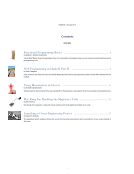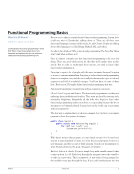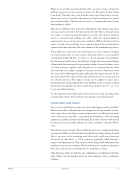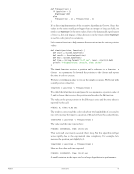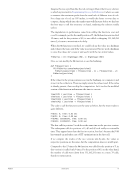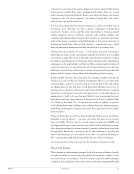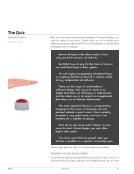cards of the psyche, lies at the very heart of the design process. You can formalize tools and implement procedures all you like, but you can’t fit passion on a PERT chart trying to do so will repel the very people you need most. The first step is one of the most fun: indulging in a fantasy rich enough to trigger secret grins of hard-core technolust. That’s the stuff that makes otherwise sensible engineers willing to devote years, if that’s what it takes, to getting it right. One of the great secrets I’ve discovered is that even someone with stupendously bad work habits (like me) can get a prodigious amount accomplished by applying one simple and obvious technique: keep moving in the same direction for a long time. Unfortunately, that can lead one down the path of specialization—an essential part of the great symbiosis between those who dream and those who produce. Specialization along with its concomitant skills is obviously necessary to get real work done, but if you’re not careful it can also become a filter through which you see the world, attenuating everything that is not somehow related to your primary focus. Over time, this can cause severe perceptual distortion from which it can be difficult to recover (especially if said specialty ends up, not necessarily through any fault of your own, becoming an evolutionary dead end in a rapidly changing industry). That’s an easy platitude for a self-proclaimed generalist to spout, but how do we resolve the problem? How do we hold on to a central design objective for a decade or more without becoming like one of those single-issue political or religious zealots who lose the broader context entirely and descend into extremism? It’s much easier to end up there than you might think, especially when you audaciously choose to chase a personal obsession rather than sell 40-hour weeks while hanging onto the remainder for your own sanity-preserving pursuits. The trick is at once simple and fiendishly tricky: all it takes is caring so passionately about the project that it fills your daydreams, turns trade journals into treasure hunts, induces you to recruit your friends, inspires doodles, and overlays a sense of purpose onto every foray into the backwaters of the web. This is a lot to ask of a job that’s been dumped on you by management, and one of our central messages here is that if this crazy-talk of passion gets you all fired up and chafing at the bonds of a career that isn’t letting you play enough, then maybe some restructuring is in order. For there is simply no way that crank-turning, even by a well-oiled department full of Really Smart People, is going to give you a sustained rush of intense creative obsession doing that requires a suite of characteristics that are generally regarded as pathological in a corporate environment: • Enough chutzpah to believe that you are doing something original and important, but the humility to steal shamelessly from the work of those who have preceded you • Enough schmoozing ability to induce others to buy into the dream, but the stubbornness to continue believing in your mad quest when associates have given up on you PragPub January 2013 30
Purchased by unknown, nofirst nolast From: Scampersandbox (scampersandbox.tizrapublisher.com)


